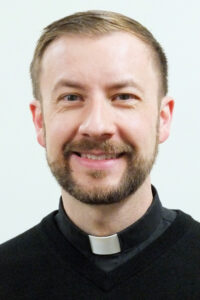By Thom Hennen
Question Box

Q. If a man and woman marry outside the Catholic Church, what do they need to do to have their marriage recognized in the Catholic Church?
A. This situation comes up frequently in parish ministry. Perhaps a couple’s faith was not as important to them at the time they got married as it is now. Maybe they had a “destination wedding” or for a variety of reasons decided to get married only in a civil ceremony at the time. Later these couples may wish to have their marriage “blessed” in the Church. However, it is not as simple as just calling a priest or deacon and asking for a quick blessing after Mass.
A couple in this situation should present themselves to their parish priest and explain their situation. Hopefully, the priest and the parish’s pastoral staff will be welcoming and accommodating in working with the couple. Nothing causes me to grind my teeth more as the vicar general than when I hear of someone trying to do the right thing only to be ignored, sent away or treated rudely by clergy or parish staff.
Yes, couples may be at the beginning of a deeper conversion process or may not have a realistic understanding of what is entailed in asking to be married in the Church, but if they are coming to us at all, we have reason to celebrate. The “new evangelization” is as much or more about handling these kinds of pastoral situations well as it is about preaching inspiring sermons or mastering social media.
Even if a couple has been civilly married for a number of years or already has children, they should go through a process of formation for marriage. From the perspective of the Church, this is not just a “blessing” or “renewal of vows,” it is truly their marriage in the Church. This process needs to be tailored to the couple’s circumstances, but adequate time is necessary to complete at least the basic components of marriage preparation as outlined by the diocese. This ensures that the couple is truly ready to make this spiritual commitment.
If either party has been married previously, they should make this known and will need to receive an annulment for the previous marriage before they can be married in the Catholic Church. Often, the couple can pursue this process parallel to their marriage preparation. Couples in this situation should also strive to exercise the virtue of chastity in keeping with their state in life (effectively, “unmarried” in the eyes of the Church) and, while continuing to participate in Mass, they should refrain from receiving Communion until their marriage in the Church.
Couples in this situation may worry they will have to shell out a lot of money and have a “big production” wedding. This is more a product of cultural expectation than any expectation of the Church. From the Church side of things, weddings are cheap — and even minimal fees may be waived in cases of genuine need. I have told couples in this situation that the ceremony can be as simple as the two of them, two witnesses, and me. Afterwards, they can go home for a celebratory grilled cheese sandwich if they like. Alternatively, they can “do it up” as a way of marking this truly important moment in their life together in relationship to God, the Church and each other. Paradoxically, as a culture I think we often make too big a deal of weddings and not enough of a big deal of marriage.
(Father Thom Hennen serves as the pastor of Sacred Heart Cathedral in Davenport and Vicar General for the Diocese of Davenport. Send questions to messenger@davenportdiocese.org)







